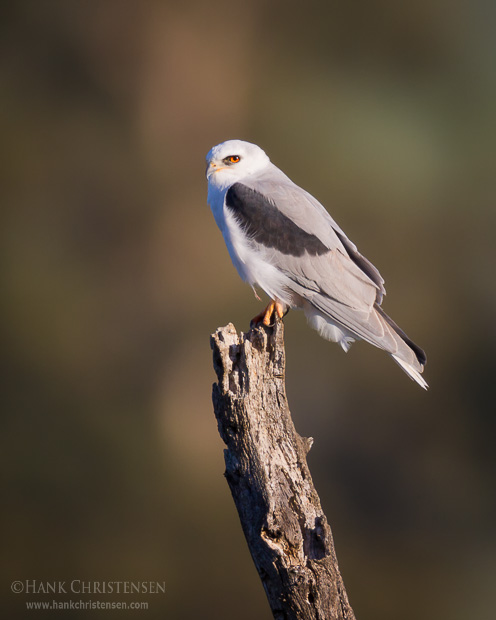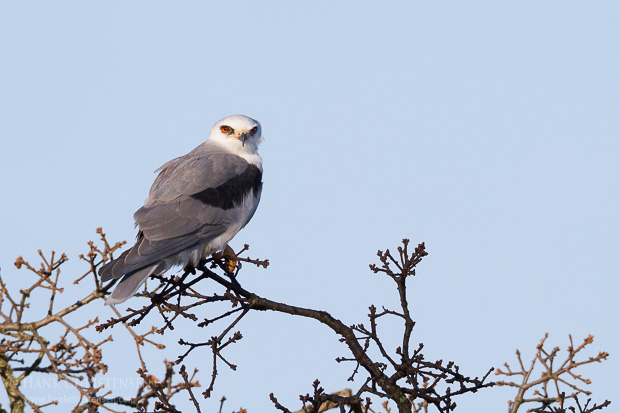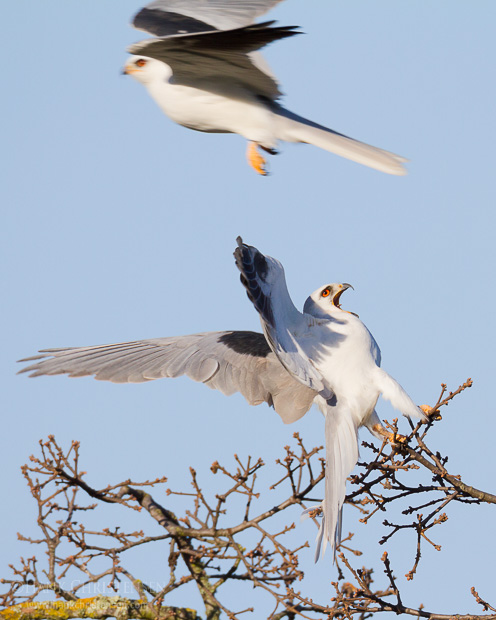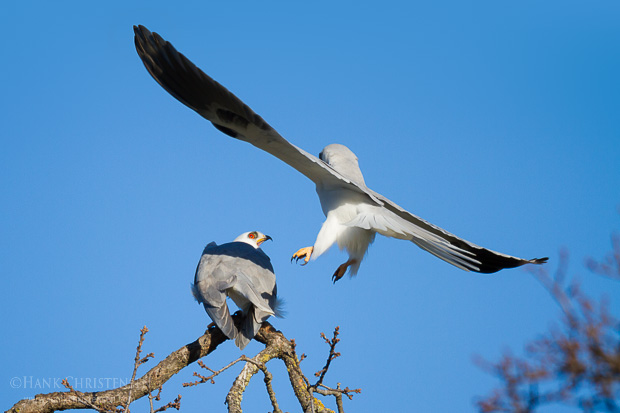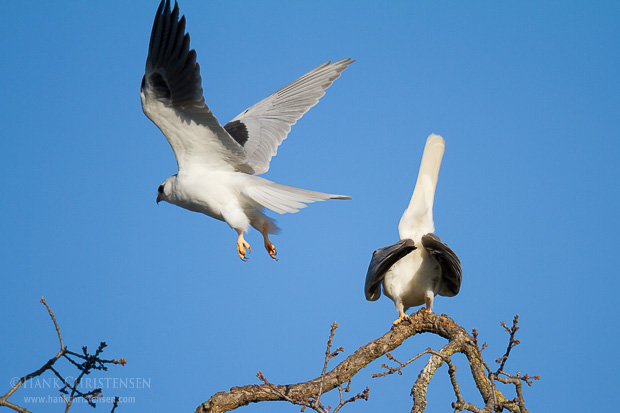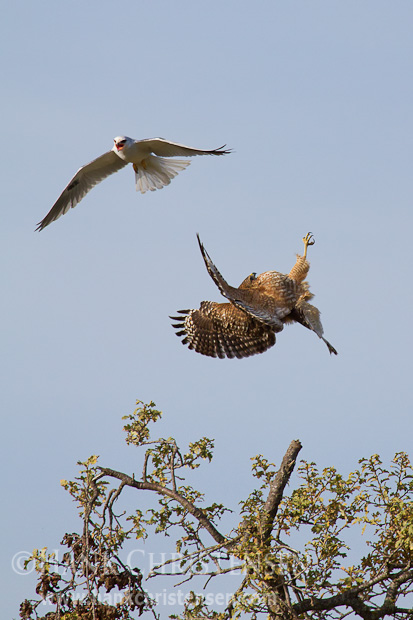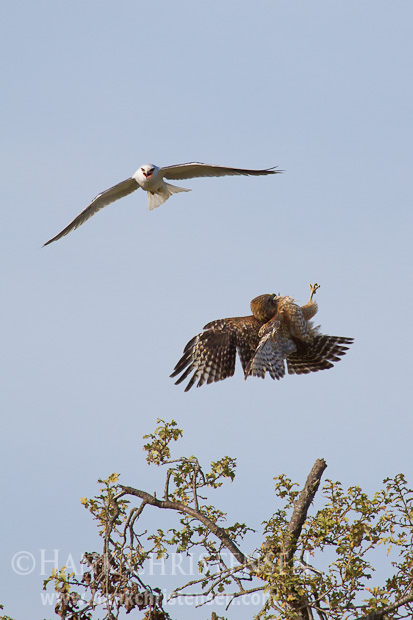While I usually don’t make location specific posts about birding, I did want to call out Palo Alto Baylands as one of the San Francisco Bay Area’s great birding spots. Located in Palo Alto right along the bay, it provides the birder with a variety of species, from water birds to song birds to raptors – there is always something interesting to see here. It even holds one of the best viewing areas for the elusive (and endangered) clapper rail. Here are a few photos of what I found there on a recent morning.
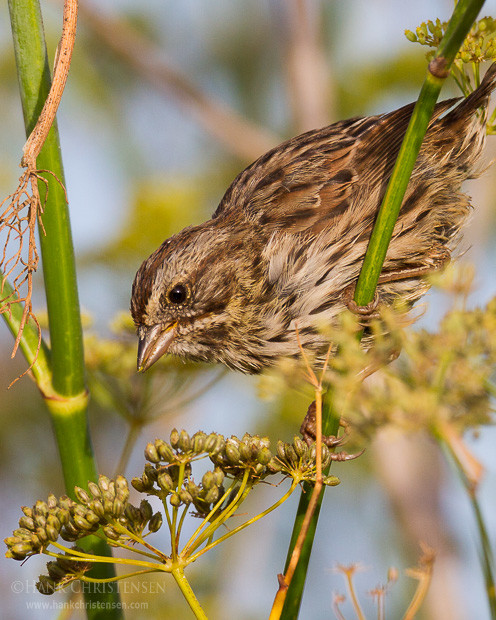
Song sparrows are one of three most common sparrow (along with white and golden-crowned) species seen at Baylands. The ubiquity of the house sparrow in the suburbs gives way to the song sparrow this close to the water. With common birds such as this, I try to create photos that go beyond just showing the bird, but also show some behavior or interesting background. In this photo, I liked the way the sparrow is tilting downward (he was eating from the wild fennel) – it creates more of an action pose.
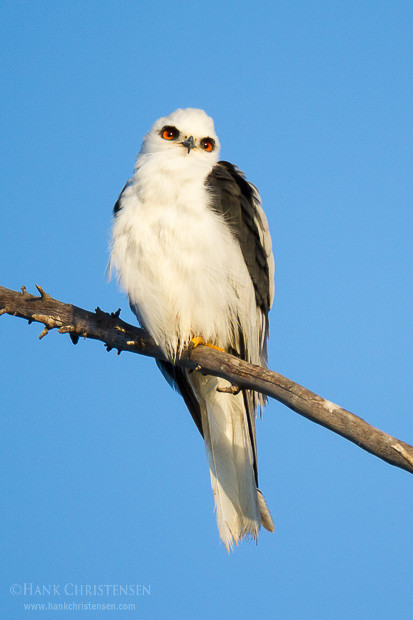
Baylands has the occasional visit from a bird of prey. Kites are seen anywhere from the water up into the foothills, hunting large, open spaces. Other birds of prey I’ve seen include fly-overs by osprey, red-tailed and red-shouldered hawks, and norther harriers.
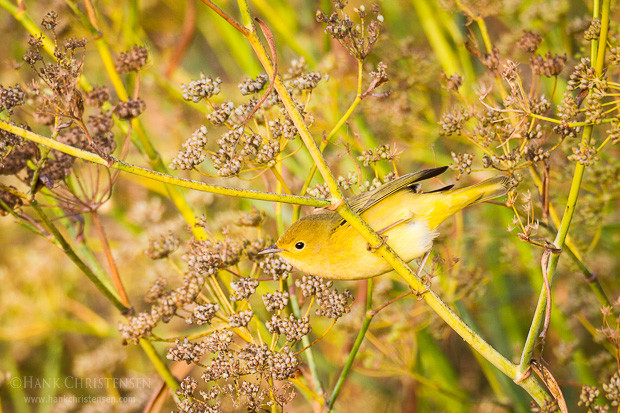
The smaller passerines get me excited because they are much harder to photograph than water birds or sparrows. The are small, fast, and rarely stay in one place for more than a few seconds. The most common warbler here is the yellow-rumped, but orange-crowned and yellow warblers are not uncommon. There are many many others, from chestnut-backed chickadees to bushtits – all of them equally hard to photograph. I loved the tonality of this image – the yellow on yellow really works here, blending the bird into her background.
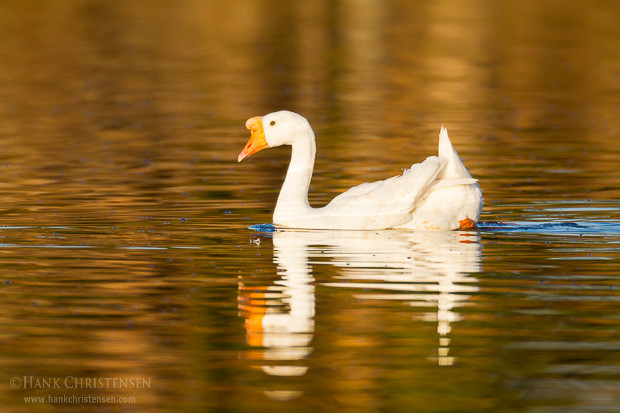
Palo Alto Baylands also has a man-made pond that attracts a wide variety of migrating ducks throughout the year. There are also quite a few year-round residents, including this domestic goose. Most of the resident ducks here are cross breeds of domestic ducks and mallards. But this pond is also a great opportunity to see migrants up close, including ruddy ducks, greater and lesser scaup, northern shovelers, american wigeons, and a variety of teals.
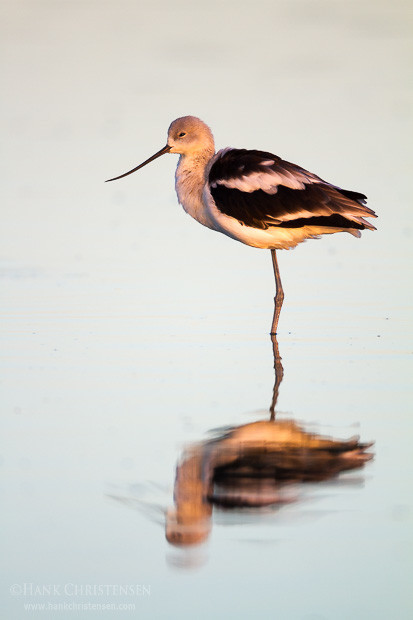
Finally there are the water birds. Habitat here includes plenty of tidal wetlands, so these species abound. All the usual suspects can be seen here, and there are good viewing angles in morning and evening. In this photo, the earliest morning light is lighting the feathers of this american avocet. In spring, there is a popular nesting area for avocets and black-necked stilts. Photographers line up to capture cute photos of hatchlings venturing for the first time out into the mud flats.
For birders there is always lots to see at Palo Alto Baylands. If you live near or are visiting the San Francisco Bay Area, be sure to put this on your list of bird spots to visit.

